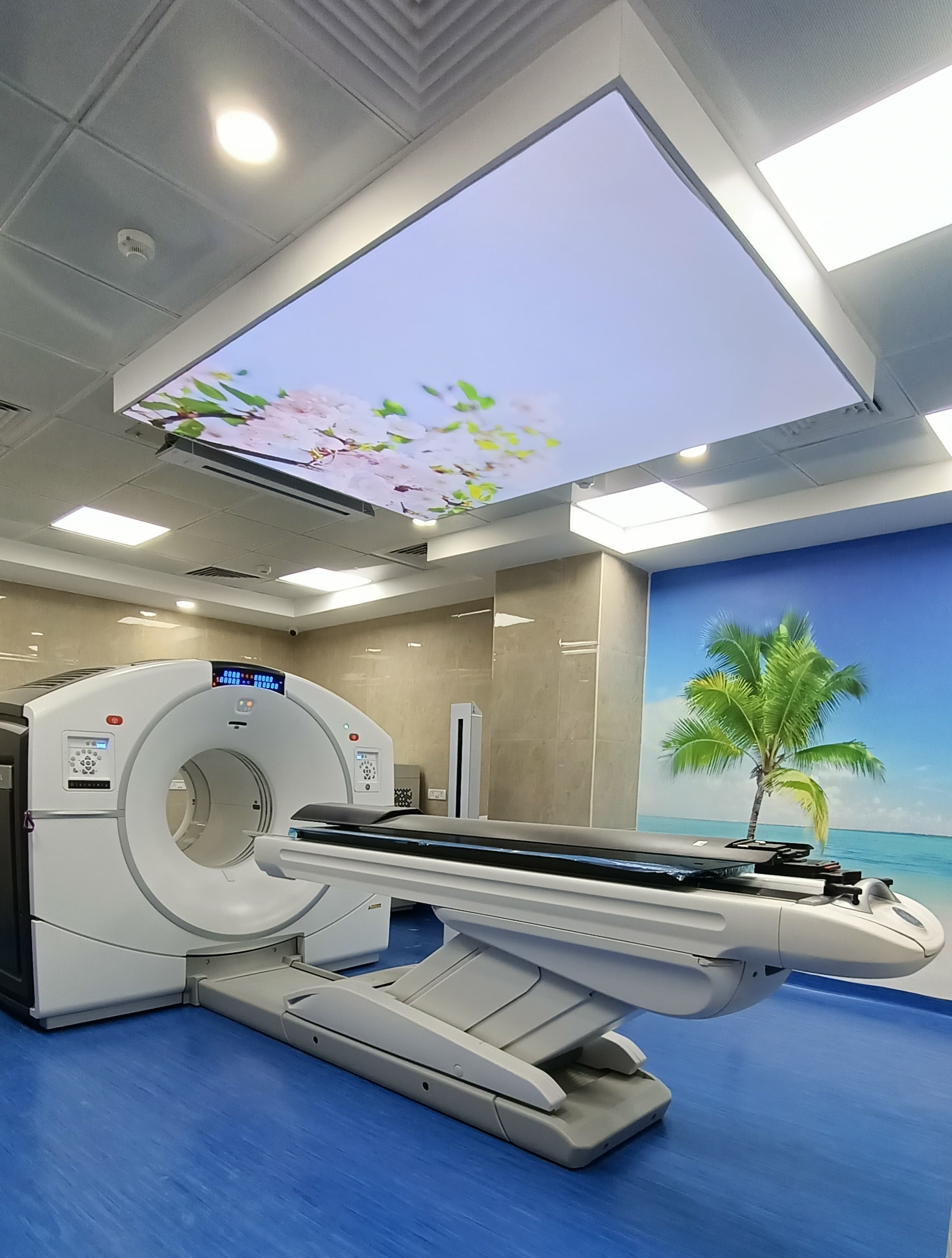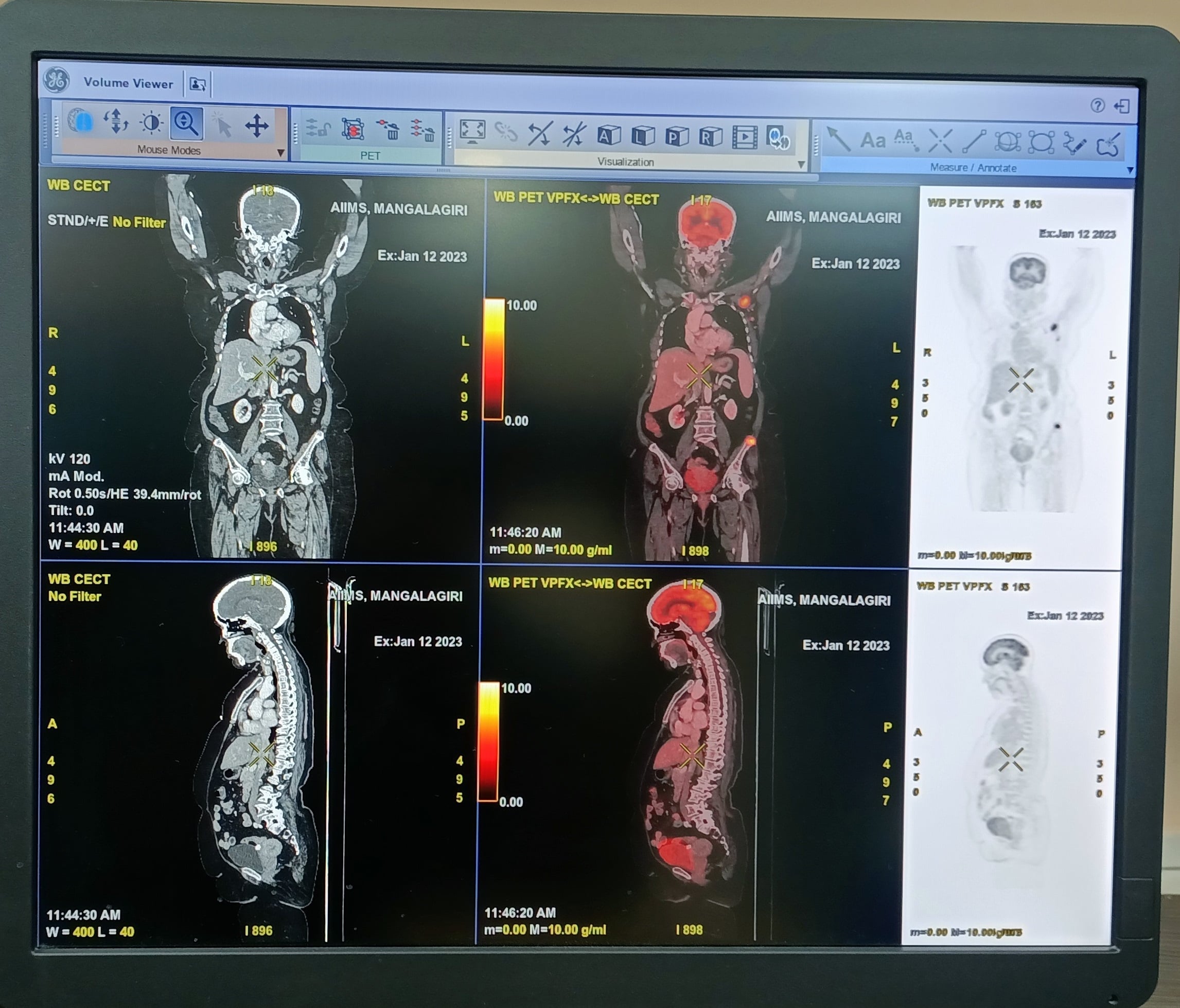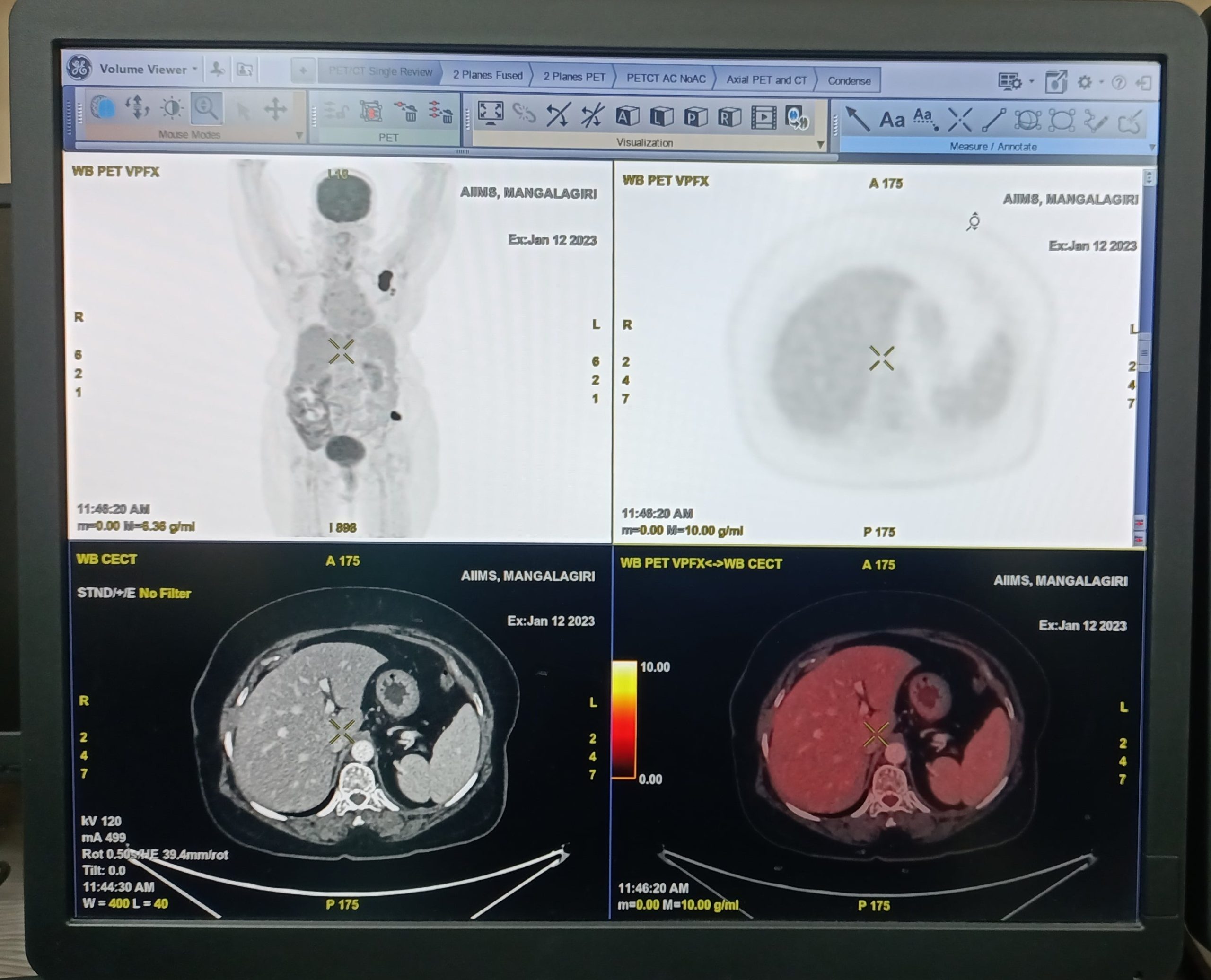NUCLEAR MEDICINE
NUCLEAR MEDICINE
Nuclear Medicine is a branch of medical science where radionuclides are used for diagnosis and treatment of various medical conditions. The emphasis is on function and chemistry rather than structure. Organ/tissue specific compounds which trace a particular physiological process are tagged with radionuclides and administered to the patient. These are called radiopharmaceuticals or radiotracers, which are usually injected into the bloodstream/locally or given orally, allowing you to see where they are localized in your body, and provide information about the function of various cells, tissues and organs.
These studies are possible by assessing the distribution of these radiotracers with the help of Single photon emission tomography (SPECT) and Positron emission tomography (PET) machines. Both types are usually used in conjunction with a computed tomography (CT) scan to help localize the site of radiotracer accumulation. PET-CT and SPECT-CT acquisitions can include the whole body, a limited portion of the body, or an organ.
Radionuclides are also used for therapy of malignant and non-malignant conditions. With the use of suitable radiopharmaceuticals ‘targeted therapy’ is also possible.
Patient Care:
I. Positron emission tomography (PET-CT scan):
PET allows ‘noninvasive quantitative’ assessment of biochemical and functional processes.
Indications in Oncology:
- detect and stage most cancers, often before they are evident through other tests
- helps in assessing early response to therapy
- can also be used as a problem-solving tool in detecting occult primary lesion
- guide a biopsy
Examples:
- FDG (18F-labelled glucose analogue) PET has been proven to be a sensitive imaging modality for detection, staging and restaging and therapy response assessment various solid and hematological malignancies.
- Ga-68 DOTANOC (Somatostatin receptor expression imaging) PET-CT for Neuroendocrine and
- Ga-68 PSMA (Prostate specific membrane antigen expression imaging) PET-CT scan for Prostate cancer patients.
Non-oncological indications:
- In ischemic heart disease and many neurological disorders, like Dementias including Alzheimer’s and Parkinson disorders, FDG PET-CT gives important early information.
- In active inflammatory disorders and chronic infections (sarcoidosis, fever of unknown origin, and musculoskeletal infection), FDG PET can detect the active lesions and also helps in monitoring response to therapeutic interventions.
II. Single Photon emission Computed Tomography (SPECT-CT scan):
It allows the clinician to assess the perfusion and functionality of specific tissues.
Indications for SPECT/CT include but are not limited to imaging of the following:
- Tumors
- Thyroid disorders
- Parathyroid disorders
- Skeleton disorders
- Inflammation or infection
- Lymphatic system
- Heart disorders
- Brain disorders
Examples:
| Name of test | Radioactive tracer | Purpose of test |
| Bone scan | Tc-99m MDP | enables identification of spread of tumour to bone, active inflammation etc., |
| Thyroid scan | Iodine-123, Tc-99m Pertechnetate | Imaging for thyroid cancer and thyroid function. |
| Renal scan | Tc-99m MAG3 or LLEC, DTPA, DMSA | To assess Parenchymal function and drainage, GFR measurement, to identify renal scars. |
| MIBI scan | Tc-99m sestamibi | Most commonly used to detect coronary artery disease; also used to locate parathyroid adenomas |
| Cardiac gated blood pool scan | Tc-99m labelled red blood cells | Monitor heart function in patients having chemotherapy. |
| Sentinel node scintigraphy | Tc-99m Sulfur/antimony colloid | Identify the pathway of lymphatic spread, most commonly performed in breast cancer and melanoma |
| Lung scan | Tc-99m Technegas/MAA | Used to detect clots in the lung (pulmonary emboli) and to measure lung function |
III. Nuclear Medicine therapies:
Targeted radionuclide therapy or Molecular radiation therapy:
A type of radiation therapy in which a radionuclide (a radioactive chemical) is linked to a cell-targeting molecule, such as a monoclonal antibody, and injected into the body. The cell-targeting molecule binds to a specific target found on the cells. This may help ‘kill the targeted cells’ while ‘limiting the harm to normal cells’.
- Radioiodine therapy for Hyperthyroidism
- Radioiodine therapy for Thyroid cancer patients
- Lu-177 or Ac-225 PSMA and DOTATATE therapies for Neuroendocrine and Prostate cancer patients respectively.
- Bone pain palliation with Lu-177 EDTMP.
- Radiosynovectomy with Lu-177 Colloid or Hydroxyapatite for Chronic Synovitis, Hemophilic arthritis and PVNS.
Radiation risk to patients with Nuclear Medicine procedures:
All nuclear medicine procedures involve administering radioactive compounds, but the radiation dose patients receive is quite low. Radiation dose with most scans being below the natural background radiation they receive from the environment over the course of a year. Higher radiation dose is obtained from PET scans and Radionuclide therapies performed on cancer patients. But the benefit is greater compared to the risk.
Research:
With the advent of new Radiopharmaceuticals, PET/SPECT scans or Therapies, there is great scope for research in the field of Nuclear Medicine.
Future Directions:
Being functional and metabolic process imaging, Nuclear Medicine scans can help to predict early response to a particular treatment and determine whether that treatment is effective for that person. Thus, ‘Personalized/Precision Medicine’ can be achieved with Nuclear Medicine.
Assessment of various physiological processes also allows for a better understanding of the disease. Thus, early diagnosis and/or better management is possible.
Facilities available in the Institute:
PET-CT is inaugurated and started for patient use on 04th Jan 2023. Now, F-18 FDG PET Scans are done regularly. Ga-68 DOTA and Ga-68 PSMA PET Scans will be started soon.
Various Radionuclide therapies can be performed in Two bedded high dose therapy ward in due course.
SPECT-CT and Medical Cyclotron are in the process of procurement.
The Department is also involved in the interdisciplinary management of various Thyroid disease patients.



